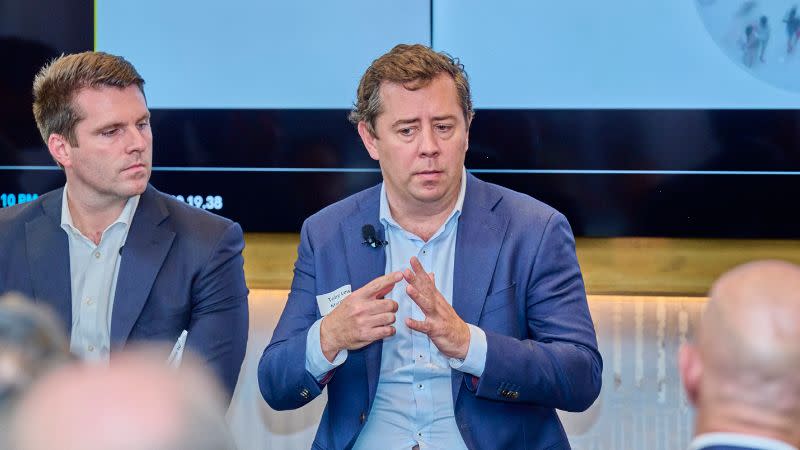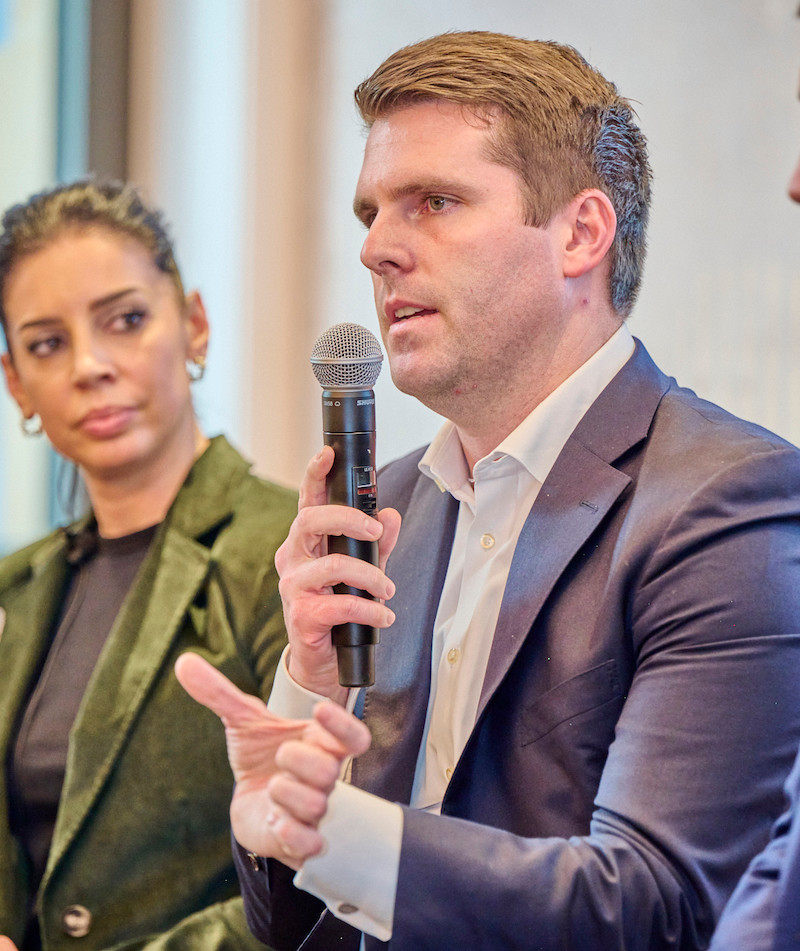
He has scoped every building in Sydney’s CBD and there are just six that Marquette’s Toby Lewis is prepared to buy.
It is this in-depth knowledge of the market that is putting private equity funds ahead of the curve in an uncertain market, according to rugby league great Cooper Cronk, who spoke at the Premium Property Syndicator Symposium event in Sydney recently.
And it is that intensity and laser focus that typifies the premium property private equity funds according to Cronk who says they “are the best at what they do, they grow by being counter-cyclical, and they remain agile”.
The Urban Developer attended the Premium Property Syndicator Symposium in Sydney recently to hear from funds including Haben, Wentworth Capital, Urban Logistics Company and Marquette on the thematics underpinning their portfolios.
Each of them has carved a niche for themselves across different sectors including retail, industrial, office and residential.
Brisbane-based Marquette has been highly acquisitive in the past few years, acquiring the Blue and Gold Towers in Brisbane’s golden triangle, and the retail component of Barangaroo. The group now has $1.25 billion in funds under management and an average internal rate of return (IRR) of 21 per cent according to managing director Toby Lewis.
While office may be experiencing a downturn, Lewis believes there is intrinsic value in the right assets during this cycle.
“We have 650 families invested with us. We own eight properties, seven of which are in Brisbane. We purely focus on Brisbane and Sydney CBD and surrounds, particularly focused on high street retail and office,” Lewis says.

“We always want to make sure we can add value. We are very much value add players trying to play with core real estate. We have a list of maybe 10 or 15 assets in the country that we are targeting.”
Lewis says the real estate landscape was ripe for Marquette to make an acquisition in the well-heeled Pitt and George Streets prime office space. He says Marquette likes to buy from institutions and implement a five-point plan aimed at unlocking the value of the asset.
“The deal flow is the best it has been in a decade. We look at can we see the ability to grow income, can we bring down the operating expenses, can we get longer leases from our tenants and grow the WALE (weighted average lease expiry), can we improve the assets to make them look better and function better,” he says.
“You can become a price maker instead of a price taker and get those development returns out of core real estate.”
Lewis says while they are very aware of the yield softening in the market, their priority every morning is protecting their existing office assets. He says assets they are looking to buy are on average 22 per cent lower than book value.
“Investors are often asking ‘are you catching a falling knife’? Our perspective is that prices are down on what they were yesterday, if they go down a little bit more before they go up that’s okay because we’ll be in there to ride the whole cycle.”
Wentworth Capital was founded by three ex-Mirvac employees including managing director Alistair Nash who spoke at the symposium.
The private equity firm focuses predominantly on distressed residential offerings in premium areas according to Nash. Wentworth Capital currently manages a diverse real estate portfolio with an end value of over $1 billion. But the equity funds push into residential has provided a “really healthy cash yield out of a very low-risk asset”.

“At our core we’re an opportunistic investor. We take a more end-to-end real estate approach. Smaller deals, nimble deals, smart deals, and we’ve made 18 deals predominantly across residential so far,” Nash says.
“We’re looking at unloved or forgotten about assets. We want to unlock those assets and reposition them.
“A lot of residential (that we’ve bought from governments) has been because they have come under pressure with budget deficits and big infrastructure bills, so that’s been a sweet spot for our business.”
Nash says residential is very easy to price in the current market and the inflation story has played into its success.
There is no denying industrial is continuing to fire in the current market.
Wentworth Capital’s joint venture with Urban Logistics Co found its feet last year amid fierce competition for assets and land, within the infill CBD markets across the southern states.
Chief executive Narelle Checchin says the thematics underpinning the industrial sector’s success continue to play out.
“Why e-commerce, well we see the rise in e-commerce, population growth and urbanisation continuing, and the demand for industrial property within close proximity to cities. We also know that industrial supply is scarce in urban locations,” Checchin says.

“A lot of industrial property has been and continues to be moved into non-industrial uses, and we know that there are high barriers to entry so there’s less risk in supply.
“We manage over $1 billion in urban infill industrial facilities. We also have a $250-million development pipeline that we’re looking to unlock over the next few years.”
Checchin says ULC is focused on core plus and development opportunities as well as income growth.
“So it’s looking at assets that are income producing that are either under-rented or their sites are not fully utilised,” she says.
“Many infill sites are in private ownership, so it’s staying close to private owners in infill areas and trying to acquire sites that are off market. We also look at acquisitions from REITs where they need to exit, or non-core strategy assets.
“Over the past 12 months we’ve executed 50,000sq m of leasing deals, and that’s delivered an increase of income around 56 per cent—we’re seeing really strong rent growth come through.”
Father and son Harold and Ben Finger established Haben 13 years ago and it has about $2 billion under management across 12 assets on the eastern seaboard.
Haben managing director Ben Finger says there are two main strategies they employ in their investment in retail assets.
“At the outset we made a strategic decision that we wanted to be a niche operator and focus in on one sector. For us where we saw the opportunity was what we call food and service-based shopping centres,” Finger says.

“There were two reasons that drew us into this space. The first reason being that we needed food and services when we were dealing with other people’s capital. We needed to be sure it was a reliable stream of income bringing good outcome to our investors.
“The second piece for us, which was really exciting for us being developers, was the opportunity to extract that development upside on all these sites. All shopping centres have that mixed-use zoning opportunity, and by and large most shopping centres haven’t exploited that.”
Haben is currently working on a 700-apartment plan for one of its shopping centres. Finger says the “base case” is what they can achieve in value add and management of the shopping centres.
“What we try to achieve is that upside, which would be an approval, or in some cases a small scale development on top of the shopping centre.
“What that’s enabled us to achieve is some great outcomes for our investors. We’ve exited out of five of our funds to date over 13 years, achieving an IRR of 24 per cent.”
Finger says when comparing metro and non-metro shopping centres the development upside “needs to be more tangible” to make it stack up.
Bricks and mortar retail may have taken a hit during the pandemic Finger says their shopping centres had chalked up month-on-month growth in terms of foot traffic and sales and were relatively resilient.
And while there may be uncertainty in the real estate landscape all four funds see the opportunity in the forecast population growth and its demands on the future of the built environment.
You are currently experiencing The Urban Developer Plus (TUD+), our premium membership for property professionals. Click here to learn more.
